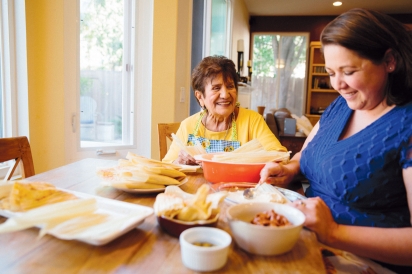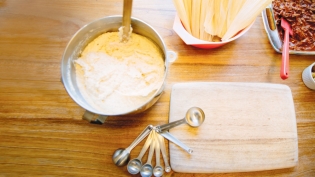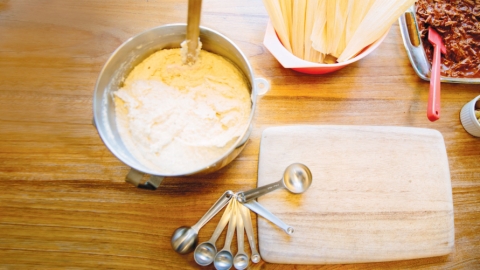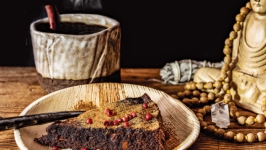Savoring Tamale Time
Tamales are more than a traditional holiday dish for me. They’re a symbol of family time, making memories as the generations of my family worked together to make the steamed masa packets filled with succulent beef or pork.
Growing up, my grandmother, Julia Parra, would tell us stories all year long about when she prepared them with her mother, sisters and cousins in Arizona. The recipe was by feel and memory, handed down from generation to generation. I’m thankful that my grandma was so adamant about keeping the tradition alive and handing down the recipe and process. The process of preparing them each year in early December makes up my fondest tamale memories.
Each year, about a dozen of us work for at least half a day to make mounds of tamales, enough to last from Christmas morning through to New Year’s Day and beyond. (Because tamales take a fair amount of work, we make extra to freeze and eat throughout the year.)
The day always starts with my dad walking into my auntie’s kitchen with a steaming hot pot of beef that my mom had slow-cooked overnight. Over the next few hours, my auntie will send someone back to the Mexican market in downtown Oxnard for more masa. It never fails.
My grandma complains that the ojas (corn husks) are too thin as she pushes them into the sink of water to soak. My cousins and sister try to make deals to get out of the labor ahead. At some point, my uncle will get yelled at and thrown out of the kitchen for making a burrito with the meat that is supposed to be for the tamales. The little kids cut olives in half and watch Christmas movies.
Then we start to spread the masa, spoon the meat and gently fold the tamales. “No, mija, that’s not how it’s done,” grandma will say, deftly folding the corn husks into a three-sided pouch. Her fingers move with seamless beauty practiced over decades.
I’ve been asked why we don’t make tamales completely enclosed by the corn husks or tied with a piece of husk to form a package. Tamales vary by region and country, each with its own way of filling and folding the tamales. In some regions—like parts of Mexico, Central America, the Caribbean and northern areas of South America—banana or plantain leaves are used instead of corn husks.
We make them the same way as my great-great-grandmother from Northern Mexico. My grandmother has instilled the tradition of making them in her four children, nine grandchildren and now her 25 great-grandchildren.
It’s a fantastic commotion that is the most beautiful culinary experience of the year in our family. And I hope it will be for yours.












